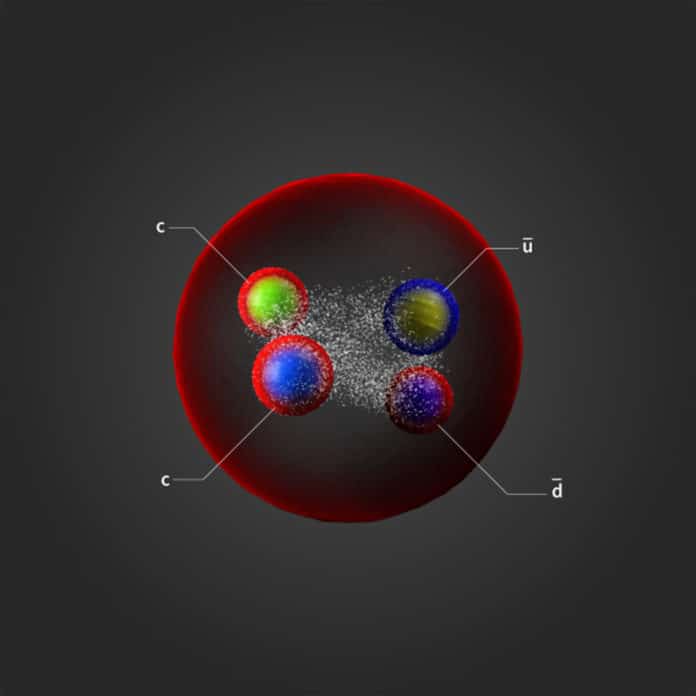Quarks, the fundamental constituent of matter- combine to form composite particles called hadrons, namely baryons. The baryons contain three quarks and mesons, which are formed as quark-antiquark pairs.
In recent years, scientists have discovered so-called exotic hadrons – particles with four or five quarks.
The LHCb experiment at CERN reported the discovery of an exotic particle called Tcc+, a tetraquark. It is the longest-lived exotic matter particle ever discovered. The particle has two charm quarks and an up and a down antiquark.
Several tetraquarks have been found in recent years, yet this is the first particle that contains two charm quarks, without charm antiquarks to balance them. That’s the reason scientists call this particle an open charm (double open charm).
Besides being an open charm, the particle has other exciting features such as:
The first particle to be found belongs to a class of tetraquarks with two heavy quarks and two light antiquarks.
It can decay by transforming into a pair of mesons, each formed by one of the heavy quarks and light antiquarks.
Theoretical predictions suggest that the mass of this type of tetraquarks is similar to the sum of masses of the two mesons. Such similarity in mass makes the decay difficult, prompting a longer lifetime of the particle, and indeed Tcc+.
Scientists noted, “The discovery paves the way for a search for heavier particles of the same type, with one or two charm quarks replaced by bottom quarks. According to calculations, the particle with two bottom quarks is fascinating: its mass should be smaller than the sum of the masses of any pair of B mesons. This would make the decay not only unlikely but forbidden.”
